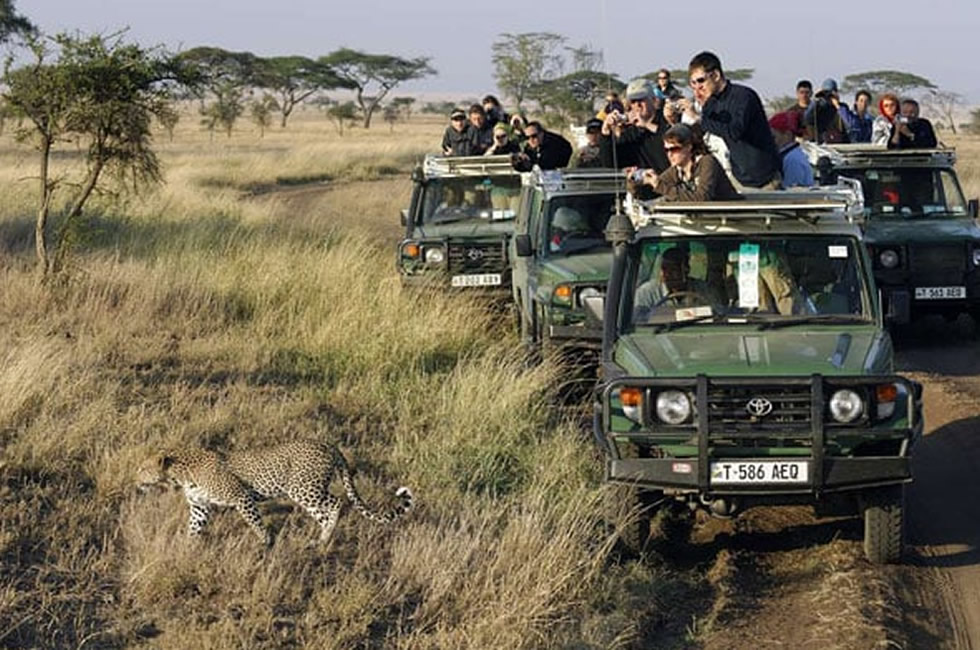East Africa offers some of the most iconic safari experiences in the world, attracting tourists who seek a direct connection to nature and wildlife. While the region is often associated with luxury travel, it is equally accessible to those working within a budget, provided they plan carefully.
What sets East Africa apart is the availability of cost-effective alternatives that maintain quality and authenticity. By tapping into local knowledge, opting for smaller operators, or choosing alternative seasons, visitors can experience the magic of an East African safari without spending extravagantly. Additionally, community-based tourism initiatives and camping options provide excellent opportunities to balance costs while supporting local economies.
Timing Your Safari for Cost Savings
The timing of your East African safari can significantly influence your overall budget. While the drag of peak seasons is substantial due to the abundance of wildlife activity, they also come with higher prices for accommodation, park entry fees, and guided tours. Knowing when to travel is key to striking the right balance between cost and experience.
Peak vs. Off-Peak Travel Seasons
Peak seasons, typically aligned with dry months like June to October and December to February, are characterized by heightened wildlife visibility due to sparse vegetation and the congregation of animals around water sources. However, these periods often coincide with increased demand, increasing accommodation costs and guided tours.
Off-peak seasons offer an alternative for cost-conscious tourists, particularly during the rainy months of March to May and November. While there may be challenges, such as muddy roads and sporadic rainfall, these months have notable advantages, including reduced prices, fewer crowds, and greener landscapes that enhance photography.
The Benefits of Shoulder Seasons
For those looking to enjoy the best of both worlds, shoulder seasons—just before or after the peak—can provide a compelling option. In East Africa, these occur during late May or early November, when prices drop, but wildlife viewing remains favorable. This is an excellent time to take advantage of discounted accommodation rates and smaller group tours.
Planning carefully around these seasonal trends allows visitors to optimize their safari experience, ensuring their trip remains memorable and cost-effective.
Choosing the Right Safari Destination
Selecting the correct destination in East Africa is critical in planning a budget-friendly safari. Each country in the region offers unique wildlife and landscapes, but the costs associated with these experiences can vary significantly. Understanding these differences allows visitors to tailor their itineraries without overspending.
Budget-Friendly Parks and Reserves
East Africa is dotted with national parks and reserves catering to various budgets. For example:
- Kenya’s Masai Mara National Reserve offers exceptional wildlife sightings, including the Great Migration, with options for budget campsites and group tours.
- Tanzania’s Tarangire National Park is a more affordable alternative to the Serengeti, providing impressive wildlife encounters.
- Uganda’s Queen Elizabeth National Park combines savanna and water-based safaris at a fraction of the cost of larger parks.
- Rwanda’s Akagera National Park has emerged as a viable option for budget-conscious tourists seeking a mix of wildlife and scenic beauty.
Hidden Gems for Affordable Wildlife Experiences
Lesser-known destinations such as Kenya’s Samburu National Reserve or Tanzania’s Selous Game Reserve (now Nyerere National Park) offer unique ecosystems and fewer visitors, creating a more exclusive feel without the associated costs of high-profile locations.
Comparing Costs Across Countries
When comparing safari destinations in East Africa, Kenya and Tanzania often have similar price points, particularly for well-known parks like the Masai Mara and Serengeti. Uganda and Rwanda, known for gorilla trekking, can be more expensive due to permit fees, though other parks within these countries are budget-friendly. Visitors traveling on a tight budget might find Uganda’s diverse range of parks to be particularly cost-effective.
Cheaper Accommodation Options
Accommodation is one of the most significant expenses for any safari, but East Africa provides a broad spectrum of options to suit budget-conscious visitors. From simple campsites to mid-range lodges, affordable stays allow an authentic safari experience without unnecessary luxury costs.
Tips for Finding Affordable Lodges and Campsites
Budget-friendly accommodations are often located just outside major national parks and reserves. These options allow visitors to access wildlife hotspots while avoiding the premium costs of staying inside park boundaries. Online platforms and local tour operators can help identify deals, particularly during the off-season. Booking directly with local lodges can also reduce intermediary fees.
Advantages of Hostels and Community-Run Accommodations
Some regions offer campsites, hostels, or basic guesthouses that provide clean, safe, and inexpensive lodging. Community-run accommodations are another excellent choice, often developed as part of sustainable tourism initiatives. These support local economies and allow you to engage with nearby communities, adding cultural depth to your trip.
Camping Safaris
Camping is one of the most affordable ways to experience a safari. Public campsites are available in most parks and reserves, providing basic facilities such as shared bathrooms and cooking areas. For those who prefer more comfort, many parks also feature budget-friendly tented camps with semi-permanent setups, offering a blend of affordability and convenience.
Cheaper Transport Tips
Transportation is a key factor in safari budgeting, as costs can vary widely depending on the mode of travel and the distance between destinations. Understanding the available options and their trade-offs is essential for budget-conscious visitors.
Budget Transport Options
Public transport options such as buses and matatus (minibuses) offer significant savings for those travelling between cities or to park entrances. Locals commonly use these options to provide an authentic, albeit less comfortable, travel experience. While they may not take you directly into the parks, they are an economical way to cover long distances.
Shared safari vehicles are another cost-saving option. Many operators offer group tours where the transportation expense is divided among participants. These tours typically include guides and vehicles equipped for game viewing, making them both convenient and affordable.
Cost-Saving Strategies for Internal Flights and Car Rentals
Although flights between major safari hubs like Nairobi, Arusha, or Kigali can save time, they are often expensive. Look for deals with regional carriers or book flights during promotional periods to reduce costs.
Car rentals, particularly for self-drive safaris, are a viable alternative for those comfortable navigating independently. Renting a vehicle with camping gear included can significantly lower accommodation and transportation expenses. However, self-drive safaris require careful planning, including understanding park rules, road conditions, and navigation tools.
The Perks of Group Safaris for Shared Costs
Group safaris remain one of the most efficient ways to reduce transportation costs. By joining an organized tour, visitors share the expense of guides, vehicles, and fuel. Additionally, group safaris often come with pre-negotiated park entry and accommodation rates, which can result in further savings.
Maximizing Local Travel Networks
Local operators offer shuttle services to popular parks and attractions in many areas. While not as luxurious as private transfers, these services are reliable and significantly cheaper. Pairing these with group tours or affordable lodges near park gates can create a seamless and budget-friendly itinerary.
DIY Safari vs. Guided Tours: What’s Cheaper?
One critical decision when planning a budget safari is whether to embark on a do-it-yourself (DIY) safari or opt for a guided tour. Depending on your preferences and level of expertise, both options offer distinct advantages and potential cost implications.
Pros and Cons of Self-Driving Safaris
Self-driving safaris can be a cost-effective way to explore East Africa’s parks, especially for those comfortable navigating independently. Renting a 4×4 vehicle, packing food and camping equipment, and paying park entry fees directly can help keep expenses manageable.
However, there are challenges to consider:
- Navigation: Self-drivers must rely on maps or GPS to locate wildlife hotspots, which may require prior research or local insights.
- Safety: Driving in remote areas requires understanding the terrain, weather conditions, and potential hazards such as wildlife crossing.
- Hidden Costs: Fuel, vehicle insurance, and camping fees can add up, so it’s important to calculate these in advance.
Self-driving safaris are best suited for visitors who are confident in their planning abilities and willing to embrace a more independent experience.
Finding Affordable and Reputable Tour Operators
While often associated with higher costs, guided tours can be surprisingly affordable when arranged through local operators or as part of a group. Many budget-friendly tour operators offer all-inclusive packages covering transport, park fees, accommodations, and meals, providing convenience and predictability.
When selecting an operator, consider:
- Reviews and recommendations from past clients
- The size of the group (smaller groups often mean higher costs per person)
- The transparency of pricing, especially regarding additional fees
Saving on Food and Drinks During Your Safari
Food and beverages can be a significant expense during a safari, mainly if you rely on high-end lodges or camp services. Planning your meals and drinks strategically allows you to enjoy nutritious and satisfying options without overspending.
Preparing Your Meals vs. Eating at Lodges
Self-catering is one of the most effective ways to save money on food. If camping or staying in accommodations with kitchen facilities, consider buying groceries from local markets or supermarkets before heading to your destination. Staples like rice, pasta, canned goods, and fresh vegetables are widely available and affordable.
For those staying at lodges or campsites without self-catering options, inquire about meal plans in advance. Opting for full-board packages may sometimes be more economical than purchasing individual meals.
Finding Local Restaurants and Markets
Local eateries near parks or towns offer authentic, affordable meals that give you a taste of regional cuisine. Dishes such as Kenyan ugali, sukuma wiki, or Tanzanian pilau are hearty, flavorful, and inexpensive. Visiting local markets also allows you to stock up on fresh produce and snacks at a fraction of the cost charged at tourist hubs.
Staying Hydrated on a Budget
Water is essential, particularly during game drives, but purchasing bottled water repeatedly can add up. Instead:
- Carry a reusable water bottle and refill it where safe drinking water is provided.
- Consider bringing water purification tablets or a portable water filter to areas where safe water isn’t readily available.
Alcohol and Beverage Costs
Alcohol and soft drinks at lodges are often marked up significantly. To save money:
- Purchase drinks from local shops before arriving at your accommodation.
- Limit consumption of expensive beverages during your stay, focusing instead on complimentary or affordable options like tea and coffee.
Common Budget Safari Mistakes to Avoid
Planning a budget safari requires careful attention to detail. Inevitable common mistakes can lead to unexpected expenses or reduce the quality of your experience. By identifying and avoiding these pitfalls, you can ensure a smoother, more enjoyable trip.
- Overlooking Hidden Costs in Bookings
- Ignoring Travel Insurance
- Underestimating Seasonal Challenges
- Neglecting to Budget for Tips
- Being Unprepared for the Unpredictable
- Overpacking or Forgetting Essentials
- Not Booking in Advance




